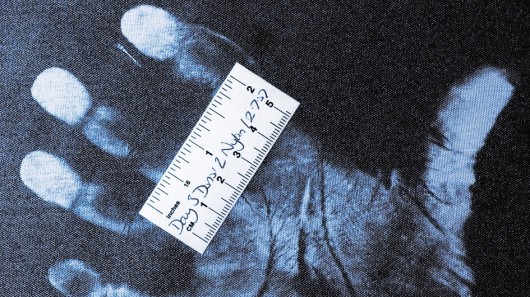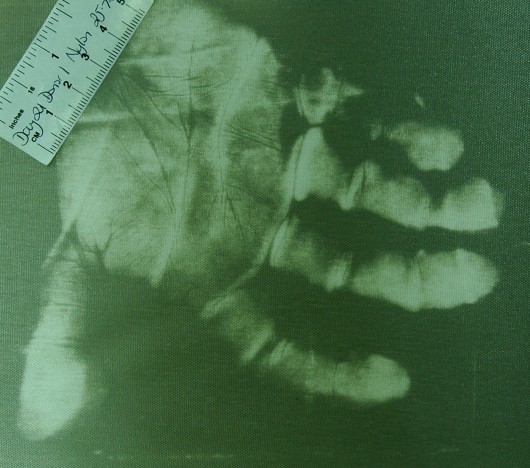Researchers manage to fingerprint clothes

Forensic scientists were able to improve and adapt a successfully working method for removing fingerprints from plastic and glass for applying it to clothes. The promising results of the research work undertaken by Ebertheu Dundee University in conjunction with the Scottish police officers show that you can now get a fingerprint from your clothes and use it as evidence in court.
In an attempt to improve the existing methodology for removing fingerprints from smooth objects made of glass or plastic, forensic scientists managed to create a kind of fingerprint on tissue. While this is not always very clear traces, and they are not always well visible details, but even now the technique can help investigators looking for additional clues.

For fingerprint examination, the tissue is placed in a vacuum chamber. It warms the gold and sprayed a thin layer onto the surface of the fabric. After that, heated zinc is used, which is attached to those areas where there are no traces of prints, so you can see the trace exactly where there was contact with human skin.
As a result, the picture looks like in a photographic negative, where the colors are inverted. The pattern of prints is clearly visible where the contact was. The rest we see the gray color of the metal. Previously, to show a clear fingerprint in this case was quite a challenge, but now it was possible. Currently, the problem is to develop the technology, improve the quality of the prints, and confirm the effectiveness of the method as a whole.
')
The recovery success rate is still low, and only in 20% of cases a clear fingerprint pattern is revealed, which allows you to identify areas from which sweat residues can be taken for DNA testing. People with more dry skin leave less quality prints, but even in such cases, the removal technique may be useful for establishing facts such as the shape and size of the arm, and also to determine whether the victim was caught or pushed. For example, it is possible to determine whether a person dropped from a height independently or was “helped” to him.
The study also showed that the best prints are obtained from more dense types of fabric, and now high-quality prints can already be obtained from many fabrics, including silk, nylon and polyester.
via GizMag
Source: https://habr.com/ru/post/113080/
All Articles